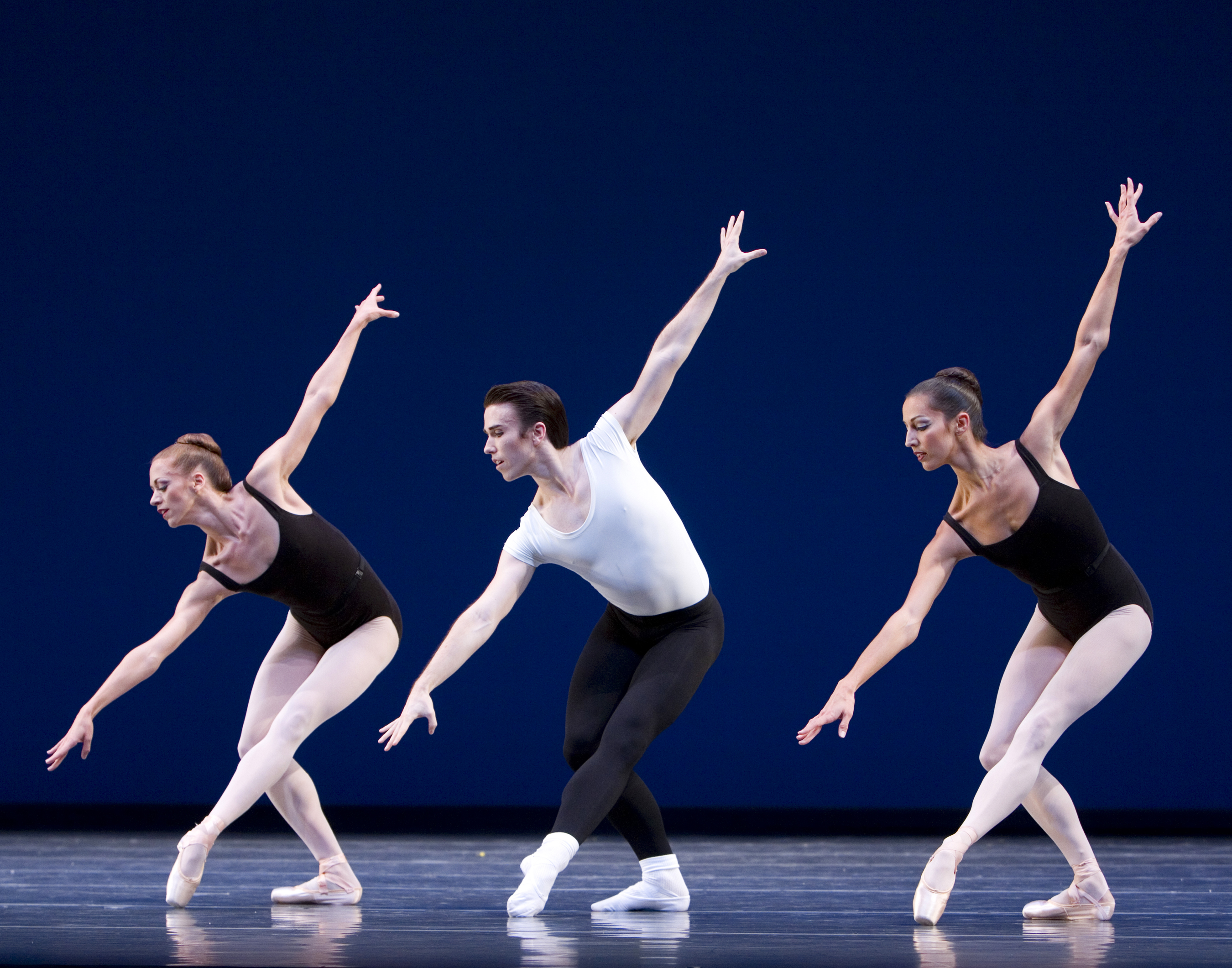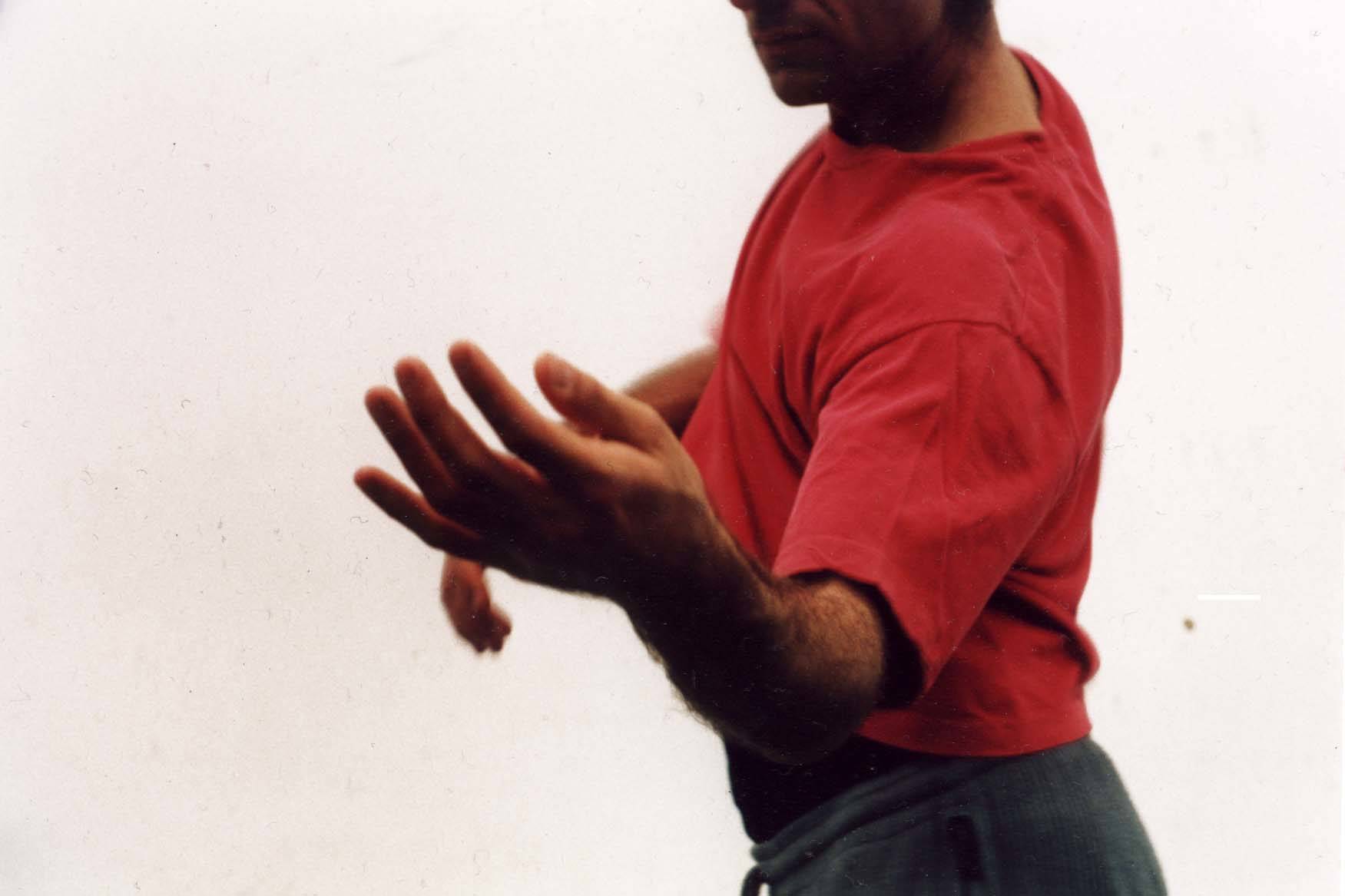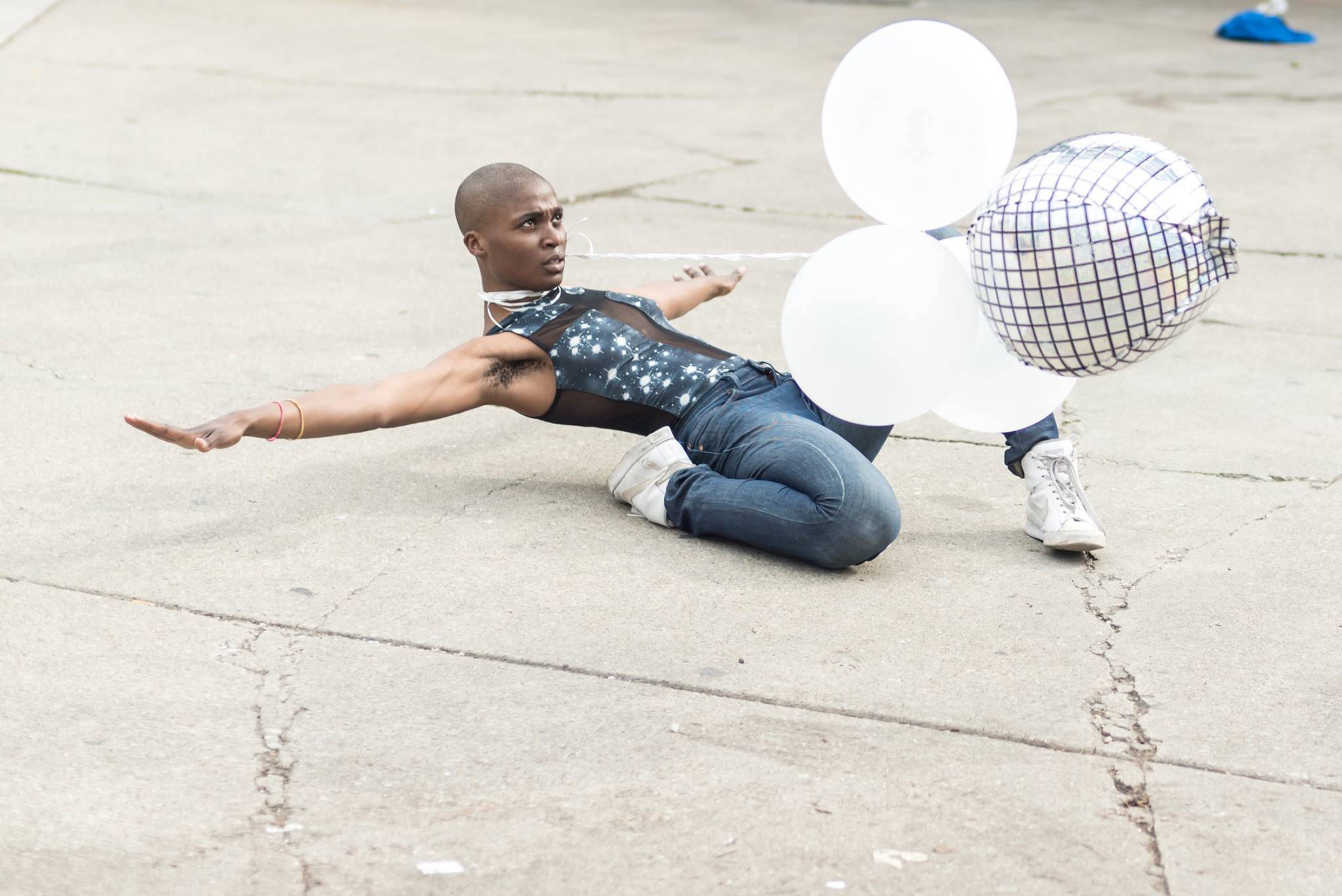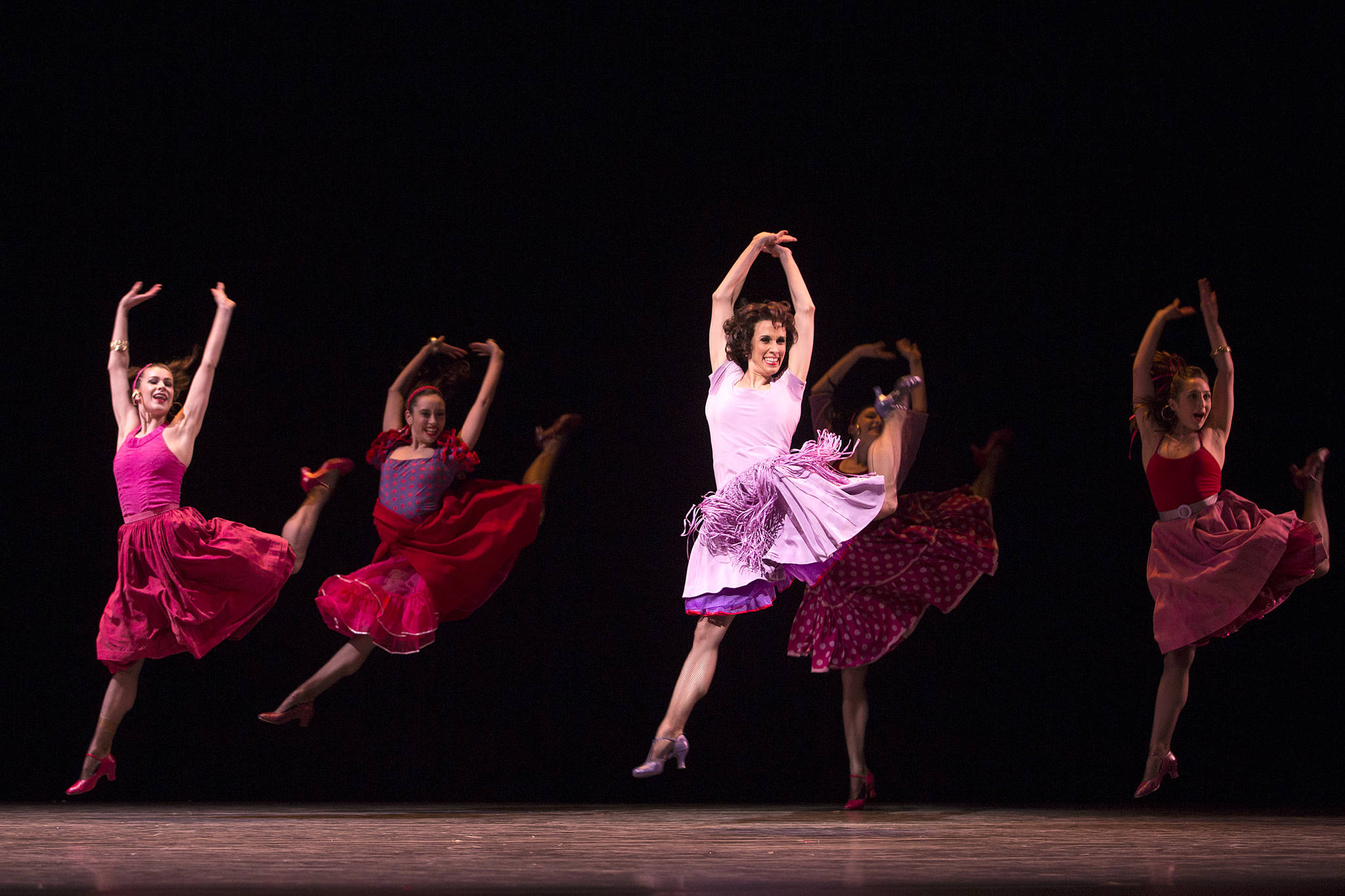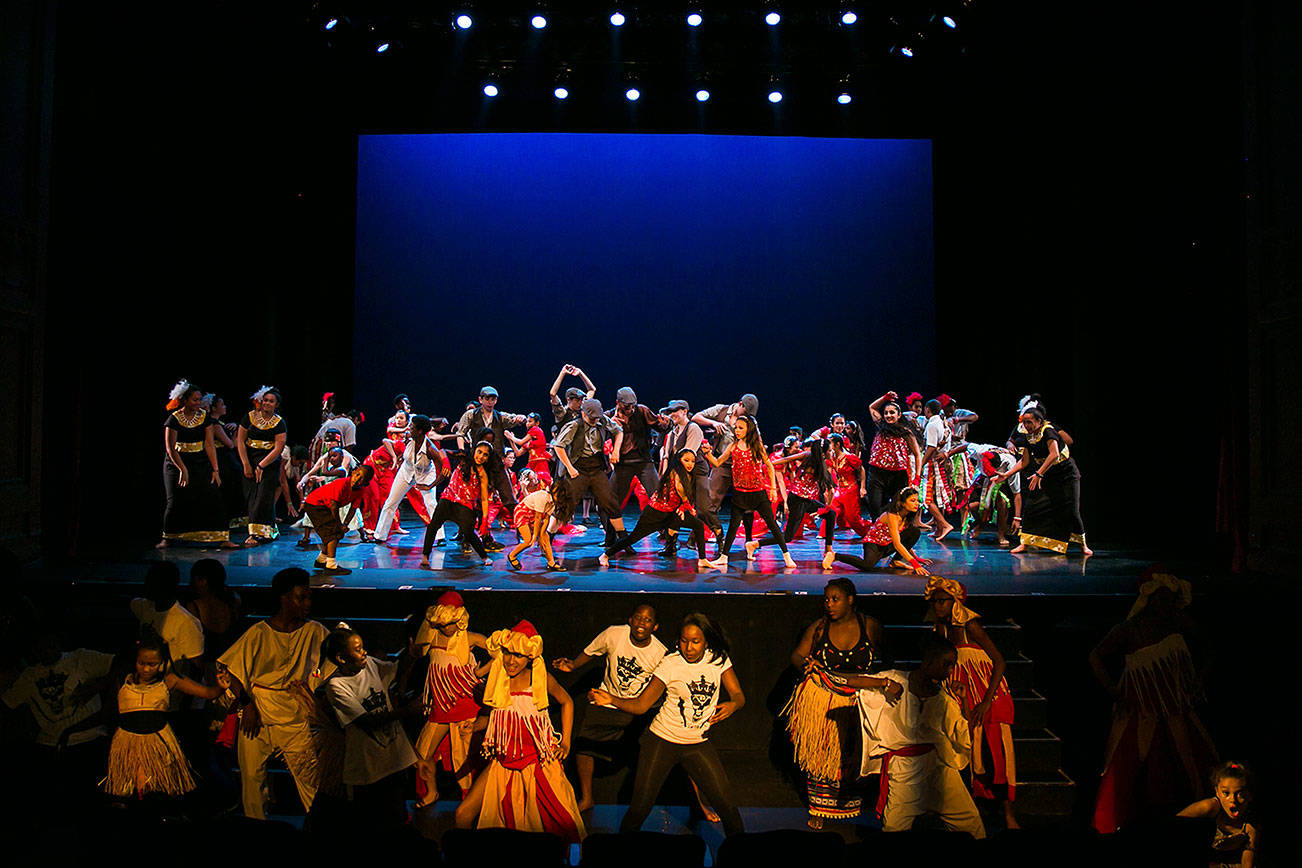Not quite a week before his Tide Harmonic was scheduled to premiere at Pacific Northwest Ballet, Christopher Wheeldon was in the studio trying to choreograph its finale. In just over an hour he made and discarded three separate versions, each complex and innovative, and launched into a fourth variation before the dancers’ union-enforced break. Altogether, he managed to complete the work in about two weeks, which is all he could spare in a schedule that has him fully booked across Europe and North America. Wheeldon is one of a small group of in-demand dance makers, along with people like Alexei Ratmansky and Liam Scarlett, who come out of a ballet background and create works that fully use the depth of that expertise.
For this year’s Director’s Choice program, PNB’s Peter Boal set Wheeldon’s new work between two ballets by George Balanchine, and the three dances represent milestones in the development of the art form. Diamonds, from Balanchine’s program-length 1967 Jewels, closes the program, and it reaches the furthest back into dance history as a reflection of the classic 19th-century works of Marius Petipa. The leading couple is the center of an orderly universe; their ritual courtship and formal manners are repeated by the soloists and corps de ballet surrounding them. Opening weekend featured two couples: Kaori Nakamura with Seth Orza and Carrie Imler with Batkhurel Bold. All exemplify that classic style that finds personal virtue in physical virtuosity.
Balanchine’s Agon has been deemed the quintessential 20th-century ballet, combining the stripped-down technique we’ve come to call neoclassical with Igor Stravinsky’s early 12-tone experiments. Even today, more than 50 years after its 1957 debut, it offers incredible challenges for dancers and dance watchers. With its use of non sequitur and pedestrian movement, it seems to foreshadow the experiments of postmodern dance. Agon’s cool formality also connects to both its classical ancestry and midcentury-modern roots. Several PNB dancers are returning to these familiar, much-coveted parts. On opening weekend, Jonathan Porretta and Benjamin Griffiths were both excellent in the quirky solo from the first trio, while Maria Chapman had a beautiful sangfroid effect in the second. Lindsi Dec made a strong solo debut, along with first performances by Laura Gilbreath and Joshua Grant as the main couple. All three performers are quite tall, and they really use that length to show the distortions that Balanchine crafted into the shape of the movement. They made the details legible, even to the back of the balcony.
With nods to the far and the recent past, Wheeldon’s new dance represents the current state of affairs in the ballet world. Taking its name from Joby Talbot’s percussion-driven score, Tide Harmonic is a work for four equal couples, but the eight people seem more like 80 at times. It’s a densely packed, hyper-mobile work, torquing the body into some complicated shapes and step-patterns. The dance explores the nature of water—not calm ponds or meandering streams, but surging waves and dangerous vortices. Occasionally Tide Harmonic slows slightly, especially for a twisty central duet with Grant and Carla Korbes, but the hiatus doesn’t last long.
Some of the energy is quite exhilarating, including a bouncy duet for James Moore and Jerome Tisserand that has a Tweedledee/Tweedledum quality, yet there are several moments of real foreboding. By the end, as the men shift side-to-side on the floor while the women glide away from them, we are unsure if the skies have cleared, or if this is just a short break in a storm.
stage@seattleweekly.com
PACIFIC NORTHWEST BALLET McCaw Hall, 321 Mercer St. (Seattle Center), 441-2424, pnb.org. $28–$173. 7:30 p.m. Thurs.–Sat. 1 p.m. Sun. Ends June 9.
